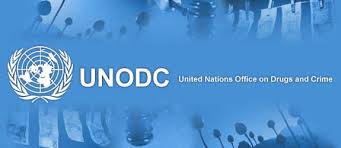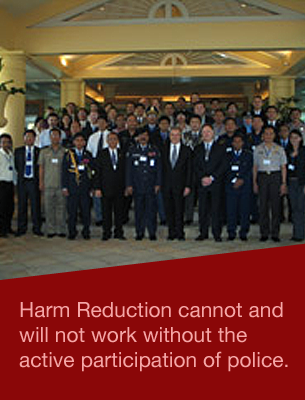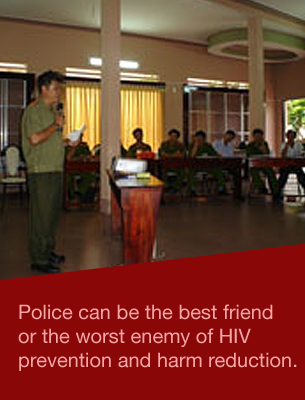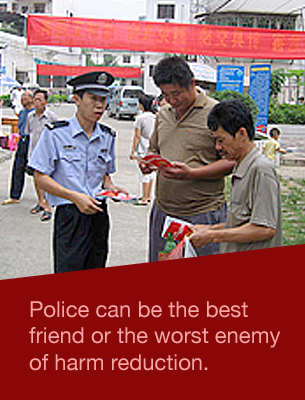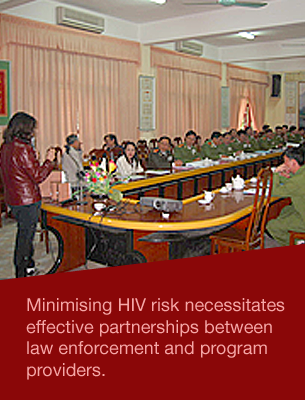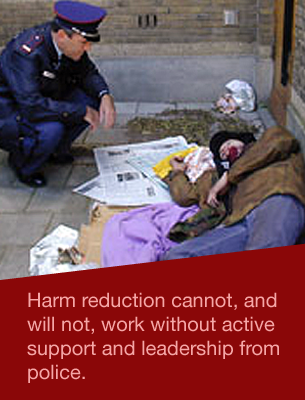The United Nations Office on Drugs and Crime have just released a ‘Practical guide for civil society HIV service providers among people who inject drugs’. Congratulations to key authors, LEAHN’s Pascal Tanguay and former Co-ordinator, Greg Denham.
Excerpts from the guide:
Acknowledgements
This practical guide was commissioned by UNODC. For their contributions
to the preparation of the toolkit, UNODC, and LEAH, and INPUD gratefully
acknowledge the following experts:
The guide is authored by Greg Denham, Independent Consultant (Law
Enforcement and HIV Prevention), Shona Schonning, Independent Consultant
(HIV, Harm Reduction and Community Mobilization), and Pascal Tanguay,
Independent consultant (Harm reduction and Police).
UNODC, LEAHN and INPUD staff members who contributed to the guide: Monica
Beg, Zhannat Kosmukhamedova, Fabienne Hariga, Riku Lehtouvori (UNODC),
Nick Crofts (LEAHN), Eliot Albers (INPUD).
Experts from around the world who reviewed the first draft of the guide and
provided valuable feedback: Sanjay Patil (Open Society Foundations), Shane
Moore (Freelance Technical Adviser), Karyn Kaplan (Treatment Action Group),
Ekaterine Lakobishvili (Eurasian Harm Reduction Network), Mikhail Golichenko
(Canadian HIV/AIDS legal network), Gunther Eisinger (EISENBURG Limited),
Krisanaphong Poothakool, (Lecturer, Royal Police Cadet Academy and Rangsit
University)
Introduction
The success of any national HIV response is dependent on the strength of multi-sectoral partnership and collaboration between all relevant agencies. Emerging partnerships between police, health experts, and civil society organizations are beginning to prove that law enforcement and HIV-prevention programmes can work together to save lives while reducing crime. When successfully implemented, these programmes reduce the risk of HIV and drug overdose, and protect the health and human rights of key populations, such as people who use drugs, sex workers and men having sex with men.
Historically, law enforcement agencies have always played a critical role in the protection and maintenance of public health. Currently, preventing the spread of HIV amongst people who inject drugs through the provision of harm reduction services is a major public health challenge in which law enforcement agencies can have significant impact and should be seen as essential partners.
However, law enforcement often find themselves in a dilemma, caught between their ‘duty’ and community expectations to uphold drug laws and create ‘drug free’ communities as well as simultaneously allowing unhindered access to harm reduction programs such as needle and syringes programmes. It is within this context that the law enforcement role has been identified as either a facilitator or barrier to the effective control of HIV.
Consequently, in many countries there has been a concerted effort by policy makers and law enforcement to address the impact of illicit drugs by increasing or broadening the range of their responses. These responses are aimed at bridging the gap between law enforcement and health services so that the harms associated with illicit drug use are reduced. These broader responses are wholly consistent with an approach that acknowledges that the law enforcement response to health issues should focus on collaboration, resource sharing and joint ownership. In this context, many law enforcement organizations throughout the world, especially in developed countries, have reviewed their approaches toward high-risk groups, particularly people who inject drugs, and implement policies and programs that support better health outcomes.
While it has become apparent over recent years that the law enforcement approach to dealing with illicit drugs has significant impact on the health and well-being of those who choose to use them, particularly those who inject, little is understood or acknowledged about how law enforcement see the issue of harm reduction. In parallel, very little guidance is available that considers the issue from their perspective.
This guide has been designed to provide representatives from civil society organisations and other agencies working in the field of harm reduction with insights in how best to engage law enforcement in order to gain support for their services. It places the user of the guide in the role of advocate and provides examples of what might work or resonate with law enforcement in terms of driving change and raises discussion about opposing viewpoints, opinions and barriers you may encounter with law enforcement.
Part 1 discovers the opportunities of civil society and police joint activities and cooperation. It is designed to provide the knowledge and skills necessary for people in the harm reduction field and representing civil society groups to engage with law enforcement in a way that will be best acceptable and most likely to succeed when advocating for their support.
Part 2 encourages civil society organizations to adopt a risk management approach in dealing with law enforcement. CSO have a responsibility to provide workers, volunteers and clients with an environment free from undue or unreasonable risk to their health and safety. This guideline outlines a set of tools and strategies to strengthen their organizations, to empower their workers and to take a more active role in management of risks and consequences.


